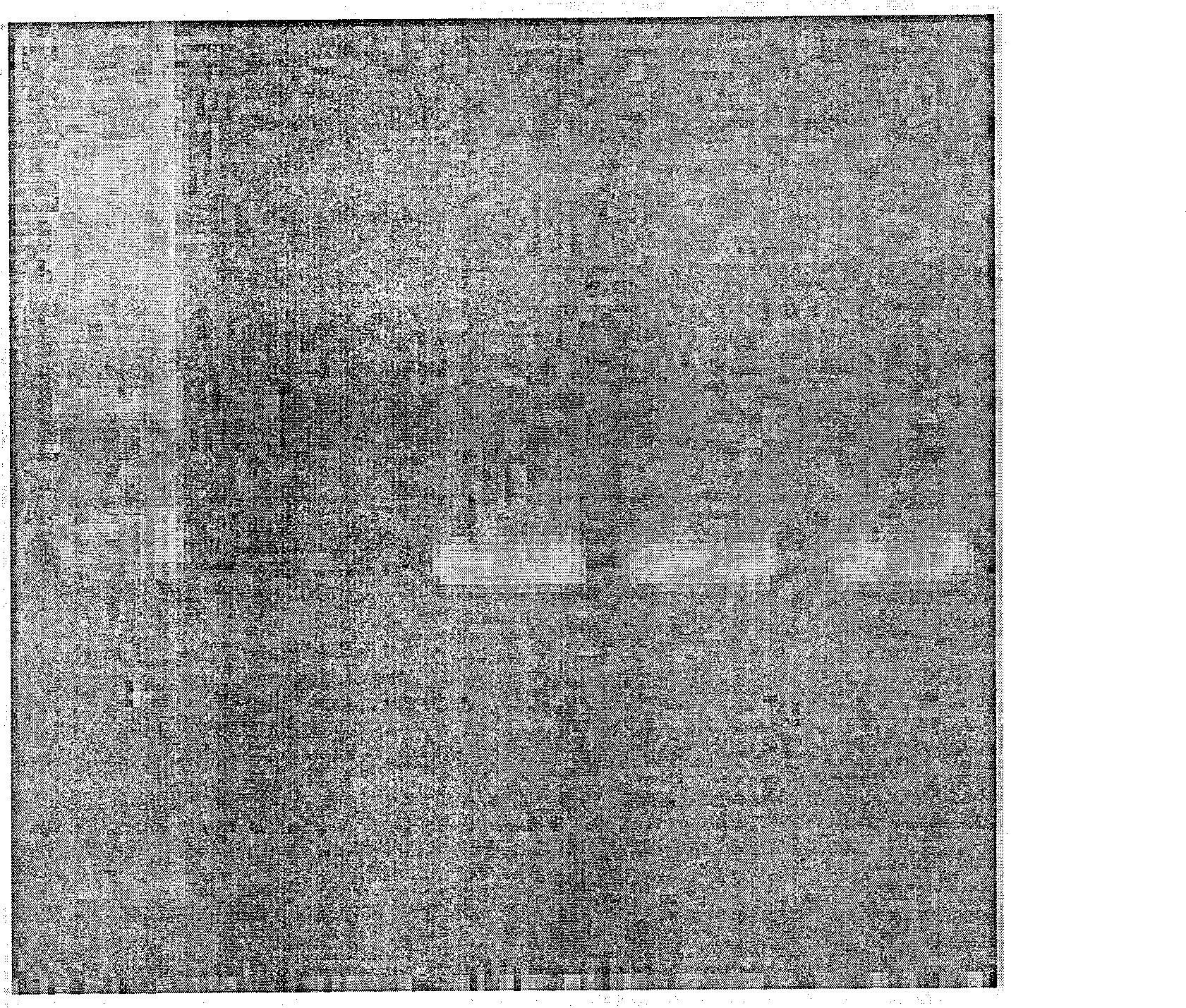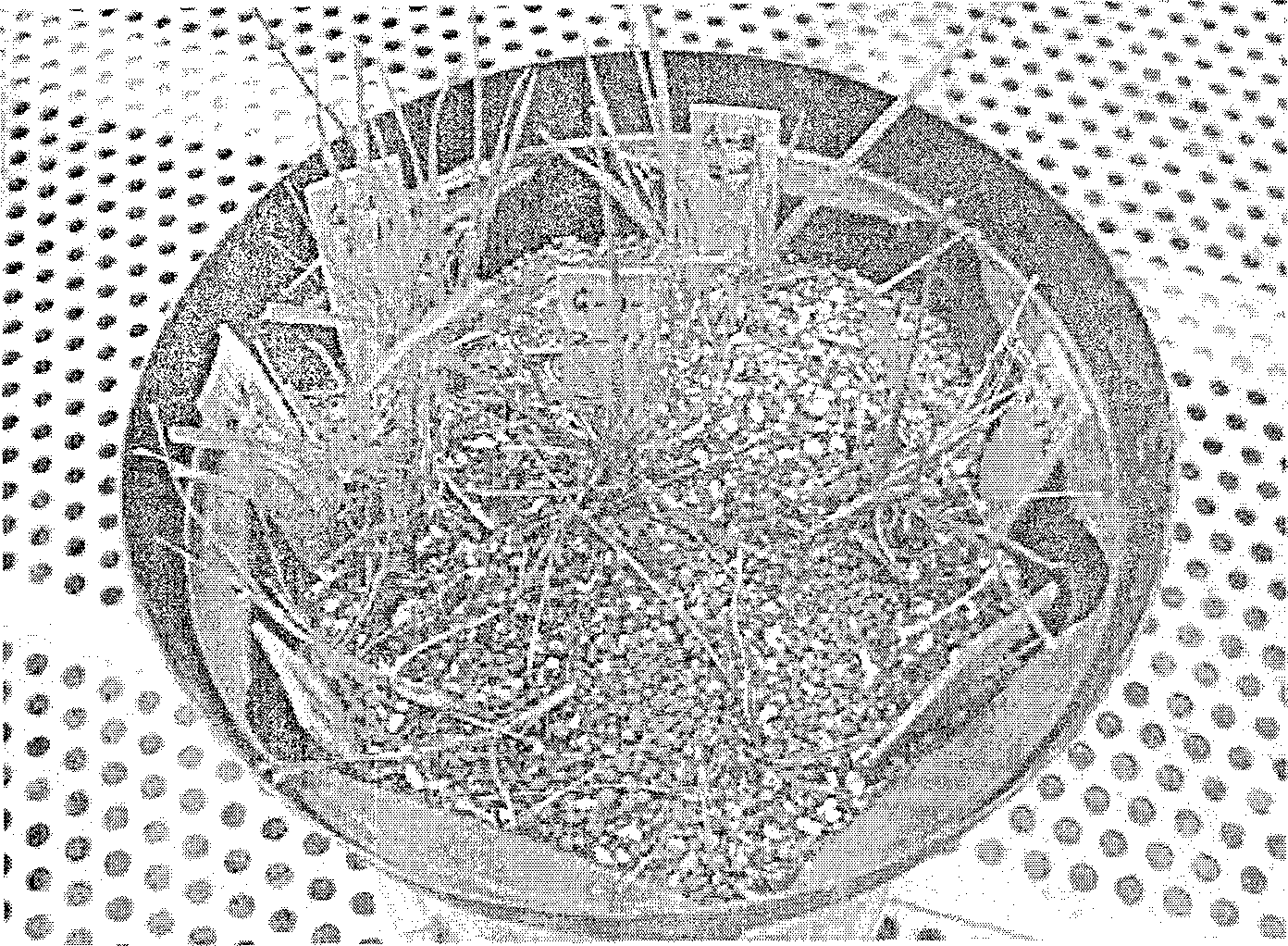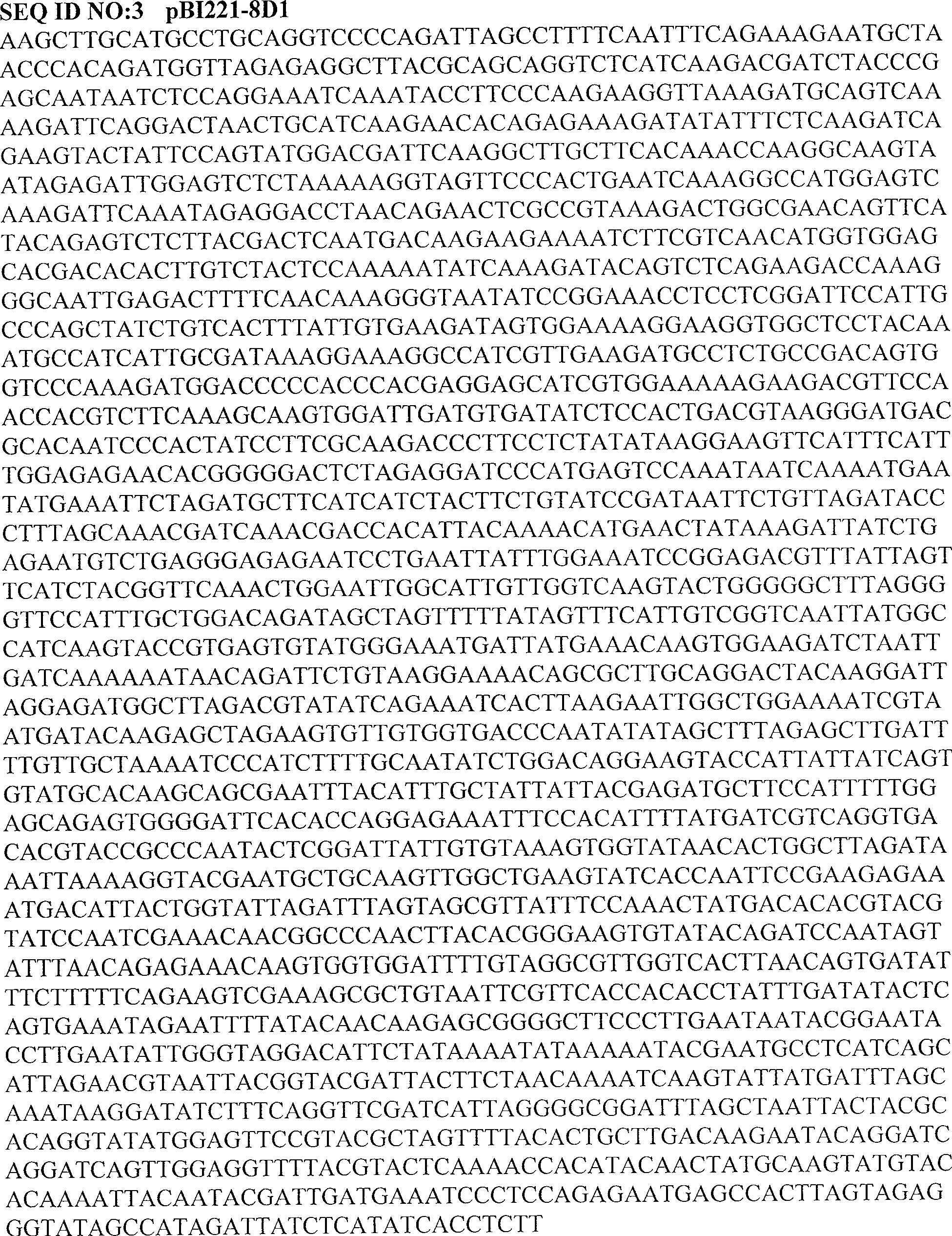Insect resistant transgenic turf grass
An insect resistance, turfgrass technology, applied in genetic engineering, biochemical equipment and methods, plant products, etc., can solve the problems of lack of insect resistance genes, technical difficulties, hindering development, etc.
- Summary
- Abstract
- Description
- Claims
- Application Information
AI Technical Summary
Problems solved by technology
Method used
Image
Examples
Embodiment 1
[0083] Example 1: Cloning cry8Da gene
[0084] The cry8Da gene was cloned from Bacillus thuringiensis strain SDS-502 according to the method described in the article published by Asano et al. ((2003), Biological Control 28, 191-196, which is hereby incorporated by reference in its entirety). A fragment of the cry8Da gene containing the active region was PCR amplified using the following two sequences as primers and the cloned cry8Da gene as a template,
[0085] 5'-GGATCCCATGAGTCCAAATAATCAAAATG (SEQ ID NO: 1)
[0086] 5'-CCCGGGTCACACATCTAGGTCTTCTTCTGC (SEQ ID NO: 2)
[0087] PCR was performed in a 100 ul reaction mixture containing 10 pg of template DNA and appropriate concentrations of other components (known to those skilled in the art). In one example, the PCR mix contains: 10u110X buffer, 2u1d-NTP, 2.5ul primer 1 (20uM), 2.5ul primer 2 (20uM), 2ul thermostable DNA polymerase, 1ul template DNA and 80ul water. According to the given plasmid manufacturing instructions, the ...
Embodiment 2
[0088] Example 2: Cloning of beetle active genes other than cry8Da
[0089] The Cry43Aa gene (GenBank accession number: AB115422) encodes a protein toxin from scarab beetles, such as beetle beetle and bean beetle. These are serious pests of turfgrass, and their predation can cause considerable damage. The Cry43Aa gene was cloned from a strain of Bacillus japonicus that was isolated from diseased green beetles and Heterophytic beetles. The full-length cry43Aa gene was amplified by PCR using the two following sequences as primers.
[0090] 5'-GGATCCATGAATCAGTATCATAACCAAAACG (SEQ ID NO: 4)
[0091] 5'-CCCGGGTTACTTTTCCATACAAATCAATTCCAC (SEQ ID NO: 5)
[0092] In the PCR reaction mixture, 1 ul of genomic DNA prepared from B. poilliae Hime strain containing about 100 ng of DNA was used.
[0093] The cry8Ca gene (GenBank accession number: U04366) also encodes a scarab protein toxin. The cry8Ca gene was cloned in Bacillus thrungiensis buibui strain obtained from Fermentation Rese...
Embodiment 3
[0098] Example 3: Cloning of the crylCa gene
[0099] The CrylCa gene (gene bank accession number: X07518) encodes a protein toxin of armyworm complexes, such as beet armyworm, fall armyworm, and American armyworm. These are serious pests of turfgrass and can cause considerable damage. The CrylCa gene was cloned in B. thringiensis subsp. aizawai HD133 strain obtained from USDA, Agricultural Research Service, Northern Research Center, Illinois, USA. The full-length crylCa gene was amplified by PCR using the two following sequences as primers,
[0100] 5'-GGATCCCATGGAGGAAAATAATCAAAATCAATGC (SEQ ID NO: 8)
[0101] 5'-CCCGGGTTATTCTCTCATAAGGAGTAATTCC (SEQ ID NO: 9)
[0102] In the PCR reaction mixture, 1 ul of genomic DNA prepared from HD-133 strain containing 100 ng DNA was used. The PCR amplified crylCa gene was cloned in pBI221 as described in Example 1 and, after testing for anti-beetle activity, was employed in turfgrass transformation as described in Example 10, below.
PUM
 Login to View More
Login to View More Abstract
Description
Claims
Application Information
 Login to View More
Login to View More - R&D
- Intellectual Property
- Life Sciences
- Materials
- Tech Scout
- Unparalleled Data Quality
- Higher Quality Content
- 60% Fewer Hallucinations
Browse by: Latest US Patents, China's latest patents, Technical Efficacy Thesaurus, Application Domain, Technology Topic, Popular Technical Reports.
© 2025 PatSnap. All rights reserved.Legal|Privacy policy|Modern Slavery Act Transparency Statement|Sitemap|About US| Contact US: help@patsnap.com



